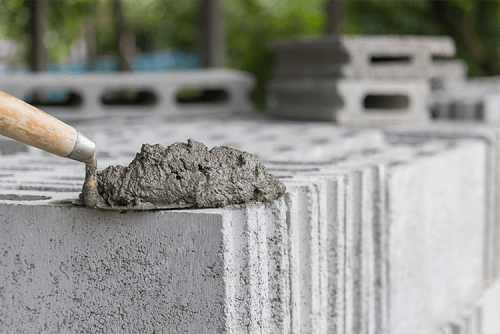 Friday, May 3, 2024
Friday, May 3, 2024  Friday, May 3, 2024
Friday, May 3, 2024 
Around three billion tons of cement are produced around the world each year (Guillaume, 2014), of which the majority is consumed in developing countries due to ceaselessly growing demand, attributed to their emerging economies.
In addition to the construction activities, natural disasters such as earthquakes and wars lead to the destruction of many infrastructures, increasing the constant demand for cement and cement-based materials such as mortar and concrete.
Mortar is cement mixed with fine sand, water and lime to improve the durability of the product. It is generally used as a paste that holds together other common materials of masonry construction, including bricks, concrete blocks and stone.
Although mortar has many advantages, it is less resistant to earthquakes, brittle, and has low tensile strength. These drawbacks have led scientists to investigate multiple alternative solutions, including the use of nanoparticles.
Since the famous lecture of Richard Feynman on “There’s Plenty of Room at the Bottom” to the American Physical Society meeting in 1959, nanotechnology has evolved as the “bottom-up” approach for controlling matter at 1 and 100 nanometers.
With their distinctive favorable properties of large surface area, high functional density, extraordinary surface effect, and high strain resistance (Mohajerani, et al., 2019), nanoparticles have taken a vital role in various applications. They are thought to enhance the material properties and transform unique phenomena into innovative applications.
Over the last decade, many researchers have explored the use of nanoparticles in the construction industry to produce cement-based materials with superior properties.
Adding metal oxide nanoparticles to cement reduces its permeability to ions, increasing its strength and durability (Al-Rifaie & Ahmed, 2016).
Some of the investigated nanoparticles are nano-SiO2, TiO2, Al2O3, Fe2O3 carbon nanotubes, carbon nanofibers, graphene, and graphite oxide (Ramakrishna & Sundararajan, 2019). However, nano-SiO2 is considered to be the most frequently used nanoparticle due to its nanosize and pozzolanic reaction (Wang, Zhang , & Gao, 2018).
The mechanical strength of cement mortar is mainly associated with the homogeneous distribution and density of the hydrated product, such as calcium silicate hydrate (C-S-H) gels, from the hydration of the tricalcium silicate (C3S) and dicalcium silicate (C2S).
Nanoparticles improve the strength and the durability of concrete by stimulating the hydration reaction and filling the micropores in the cement paste structure. This decreases the porosity of concrete, which improves the strength and mechanical properties of cement mortar (Ramakrishna & Sundararajan, 2019).
Check out the video gallery here